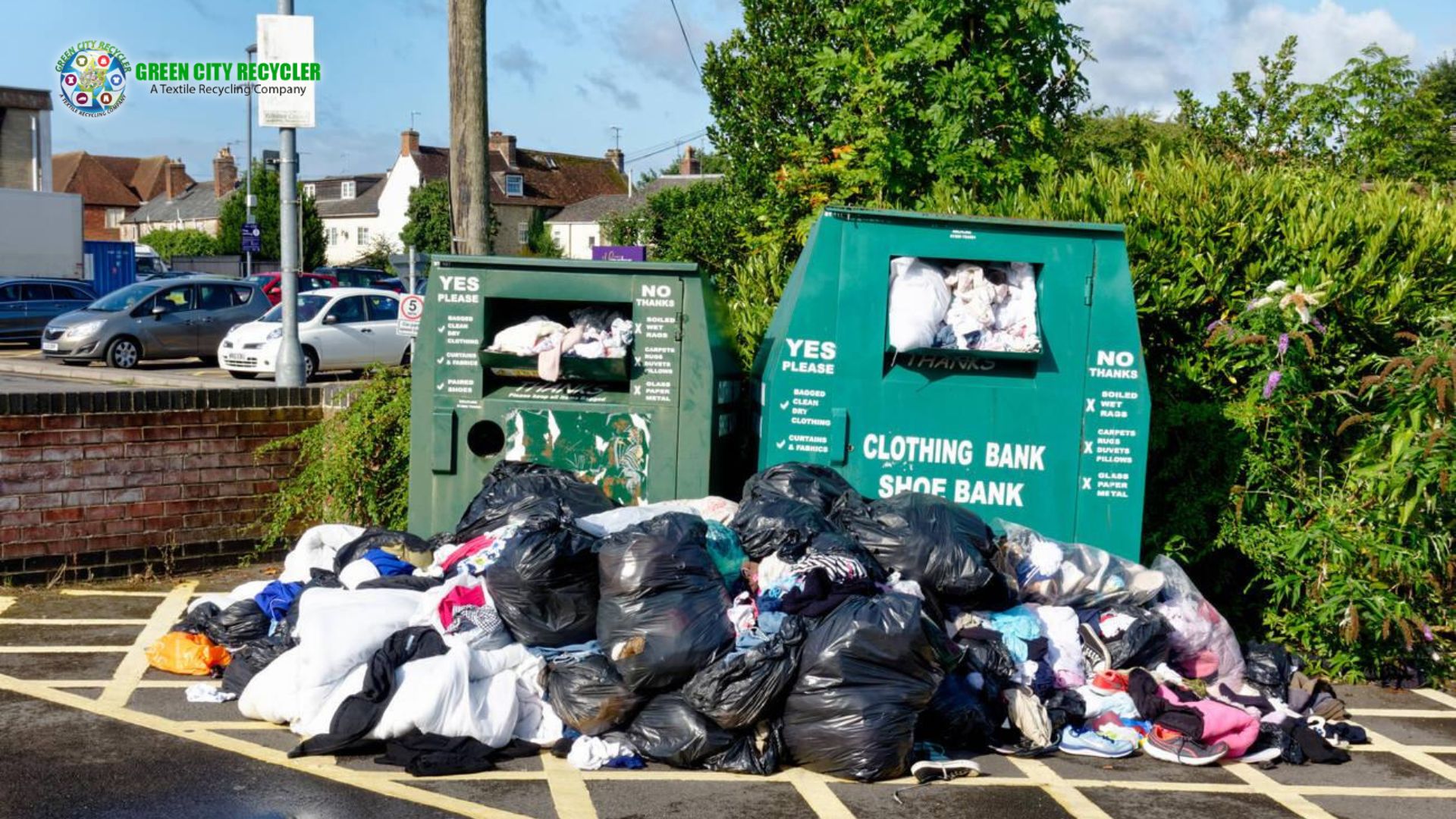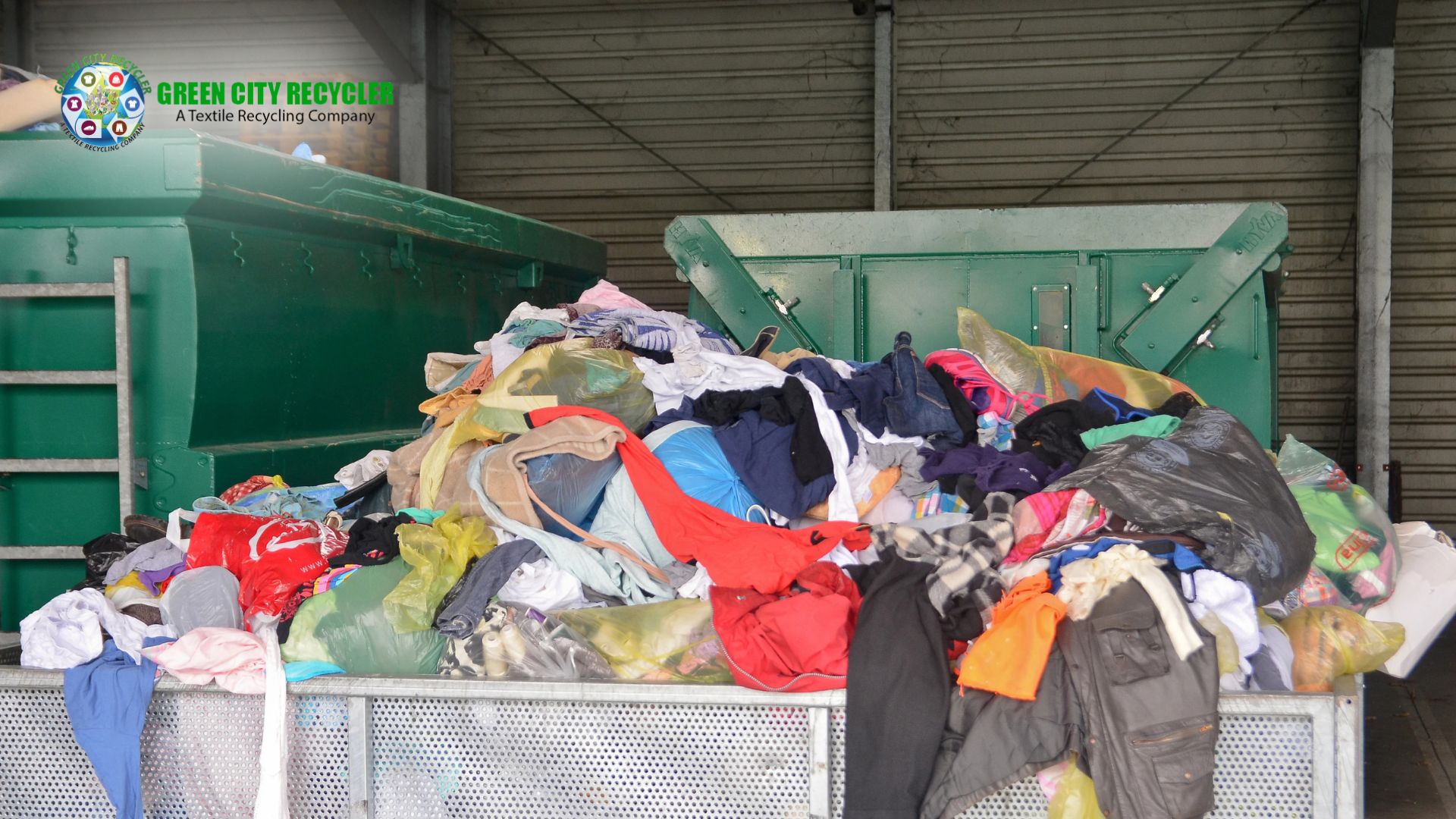More individuals are wondering in the environmentally conscious world of today: “Where can I recycle old textiles?” Fast fashion is on the rise and landfills are bursting with used clothing, sheets, towels, and other fabric-based items; it’s crucial to discover ethical ways to get rid of worn-out goods. The wonderful news is There are various choices, many of them are simpler than you would have guessed.
This article will go over the best locations to recycle old textiles, including local drop-off sites, Green City Recycler, donation facilities, and innovative home reusing ideas using fabric. This post will enable you to conduct sustainable decluttering of your clothing or downsizing of your house.
1. Leader in Textile Recycling: Green City Recycler
Curious as you are? “Where can I recycle old textiles?” begin with Green City Recycler. This company collects discarded fabrics and gives them new life in order to help to cut textile waste. Operating in American locations, Green City Recycler provides handy drop-off boxes in widely accessible public spaces including businesses, shopping centers, and communities.
They can recycle:
- Old clothing in any condition
- Shoes and accents.
- towels and linens
- Soft toys and stuffed objects
The fact that Green City Recycler guarantees that none of the textiles wind up in landfills is among their best features Items are either processed into industrial resources, recycled, or repurposed. Furthermore, their services are free, which makes them a first choice for environmentally aware homes.
The next time you wonder, “Where can I recycle old textiles?” consider Green City Recycler first. They simplify, enable, and make environmentally friendly the process.
2. Local municipal or council textile recycling initiatives
Nowadays, many local governments include textile recycling facilities within their waste management initiatives. These can call for seasonal recycling events, set curbside collection days, or permanent drop-off locations at recycling centers.
To find out whether “textile recycling” is provided in your area, search the waste management or environmental services website of your city. If you live in the United Kingdom, local governments may collaborate with textile recycling partners to compile used home items and clothes for reuse or rework.
Once more, if you’re wondering, “Where can I recycle old textiles?” don’t overlook your local government; it’s a reliable and usually overlooked supply.
3. Donor-Centered Charity Shops and Centers
Donations of used clothes and home textiles are accepted by charitable retailers, including Oxfam, Goodwill, The Salvation Army, and neighborhood thrift stores. Many businesses can still use or recycle your goods even if they are just slightly damaged or discolored.
The reason charitable stores are special is that your contributions help social issues while lowering textile waste. Just be sure to verify what kinds of things they take by phoning beforehand or visiting their website.
Bonus Tip: Certain companies still use items that cannot be sold for rags or textile recycling. This helps you to assist a worthy cause while giving your old fabrics a second life.
4. Take-back programs for clothes stores
Several big stores have textile and worn clothes take-back policies. If you frequent retailers like H&M, Levi’s, or The North Face, you may be able to recycle old goods straight back to them for store credit or use.
Usually, these programs accept:
- Any kind of apparel, including brands
- Objects in all states of condition
- Shoes, purses, belts, bags
This program encourages a circular fashion economy and lets companies answer for the whole lifetime of their products. You recycle sensibly and occasionally get paid for it—a win-win.
Thus, ask the sales clerk, “Where can I recycle old textiles?” the next time you are buying. You might be able to dump them straight there.
5. Local Repair Cafés and Swap Events
Textile switching or repair offers still another sustainable substitute for recycling. Through community clothes swaps, people can trade things they no longer need, therefore giving each piece a new home, free from trash.
Repair cafés are events where people bring damaged fabrics or clothes and learn to patch them rather than throwing them away. It’s a fantastic way to interact with people while extending the life of your goods.
Look for forthcoming exchange events or repair workshops in your neighborhood by searching local Facebook groups, community centers, or libraries. Popular and a great answer to the question, “Where can I recycle old textiles?”, these grassroots projects are becoming more and more common.
6. Upcycle and Use Textiles Right at Home
If you enjoy do-it-yourself projects, there are countless ways to recycle textiles right at home:
- Cut used t-shirts into cleaning rags.
- Create reusable shopping bags from turn-down jeans.
- Design pet bedding using discarded towels.
- For quiltwork or crafts, use fabric leftovers.
- This not only keeps textiles out of the garbage but also helps your house projects look more personal and saves money.
Thus, keep in mind that you can reuse old textiles even if you live far from a textile recycling center and still wonder, “Where can I recycle old textiles?”
7. Mail Textile Recycling
Mail-in textile recycling programs provide a simple fix for people who live in rural or far-off locations. Mail-back programs offered by companies like TerraCycle and For Days cost a little subscription fee or charge. Just toss unwelcome fabrics into a bag and submit it for recycling.
These initiatives take:
- Clothing that is damaged or worn out
- Undercover and socks
- Shoes and accessories
- Those who prefer the ease of doing things from home or cannot access nearby recycling facilities may find this especially handy.
Last Words: Develop Recycling as a Habit
All in all, “Where can I recycle old textiles?” is a query with more responses than ever. Whether you upcycle stuff at home, contribute to a charity, or toss goods in a Green City Recycler container, every decision counts.
One of the fastest-growing environmental issues is textile waste, but every one of us can help by doing little deeds like these. Therefore, start by compiling your discarded goods, researching local businesses, and deciding which recycling technique suits you most.






